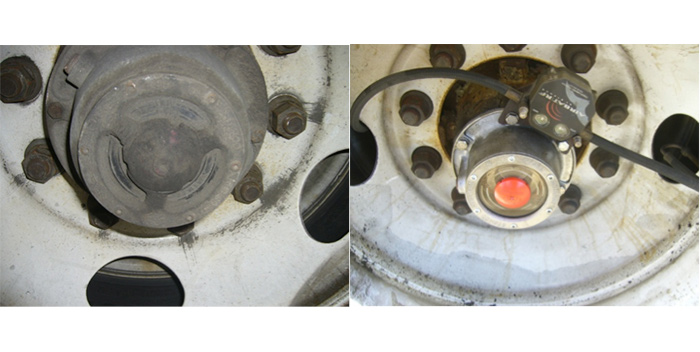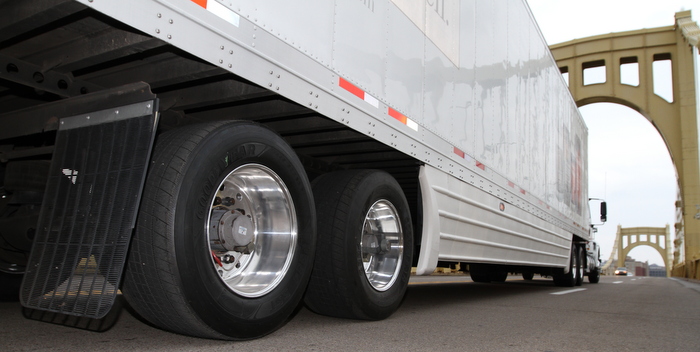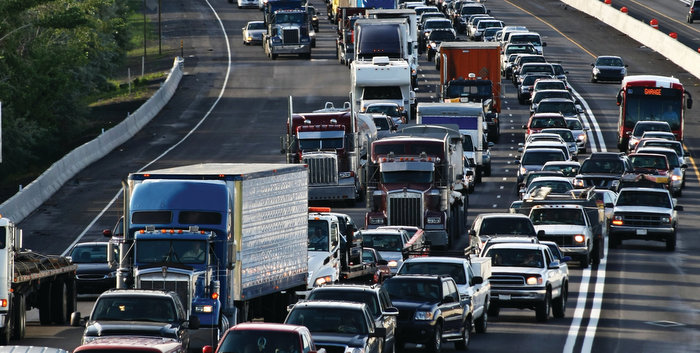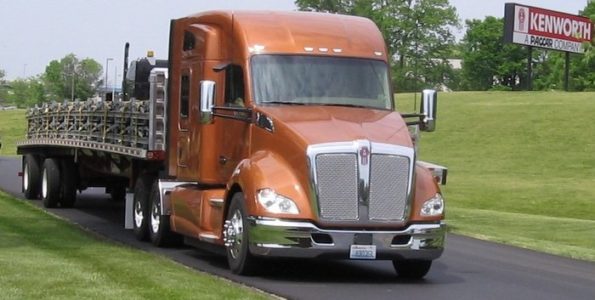Last month was full of industry news presented at three major trucking shows, the most recent of which was the Mid-America Trucking Show (MATS), and it will come as no surprise to you that the most common theme for all three shows was vehicle fuel efficiency. A broad spectrum of technology was presented at MATS, most of which has been designed to increase fuel efficiency. The majority of news was about tires, aerodynamic devices and powertrains. Truck and trailer manufacturers, and a long list of their suppliers, continue to roll out products to help fleets garner the best MPG.
Displayed at MATS was advanced tire technology, including lower rolling resistance, new and retreaded tires and wide singles—most of which are SmartWay and/or California Air Resources Board (CARB) certified—meaning they have passed the tests proving they can supply an improvement in MPG. Some tire makers reported 10% to 25% improvement over other models.
New vehicle/trailer aerodynamic products (especially trailer fairings, wheel covers, etc.) provided some of the more visible upgrades to trucks and trailers, which for the most part can be easily retrofitted. There are many designs and lots of choices. The MPG savings for some of the products are reported to range from 5% to 6%. Most trailer manufacturers are working directly with suppliers and are offering airing packages to fleets.
To get an idea of the impact powertrains have on fuel efficiency, let’s start by going back to last summer when Detroit Diesel Corp. announced its Detroit DT12 automated manual transmission as part of the Detroit complete powertrain offering. The company noted that the DT12 combines the operational ease of an automatic with the efficiency of a manual transmission, resulting in enhanced fuel economy. Also, last year Freightliner Trucks introduced the 2014 Cascadia Evolution Class 8 truck model, powered by Detroit, that featured advanced aerodynamic enhancements. According to the truck maker, the Cascadia Evolution delivers up to an additional 7% improvement in fuel economy over an EPA 2010-compliant Cascadia equipped with a first-generation aerodynamic package and up to a 5% improvement compared to a current model year 2013 Cascadia equipped with the latest aerodynamic upgrades.
Continuing the move toward integrated powertrains for the U.S. market, Volvo Trucks North America announced it now offers its I-Shift automated manual transmission as standard on all Volvo-powered trucks built for the North American market. The company also reported that sales of the Volvo I-Shift reached record levels in 2012, with nearly one of every two Volvo trucks built in North America featuring the Volvo I-Shift.
Fully integrated powertrains are common around the globe, but North American fleets have enjoyed the independence of spec’ing their own powertrain combinations. However, it appears that things may be changing. Not only do integrated powertrains provide optimum transmission and engine performance for greater fuel efficiency, but also they may be necessary for truck OEMs to meet the DOT and EPA Greenhouse Gas 2017 (and beyond) emission regulations that will help address our country’s dependence on imported oil, save money at the pump, and reduce emissions of greenhouse gases that contribute to global climate change.









